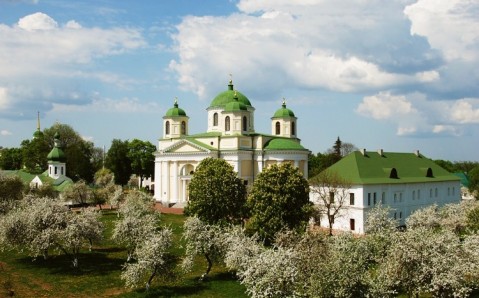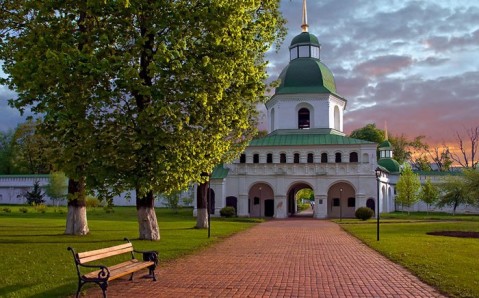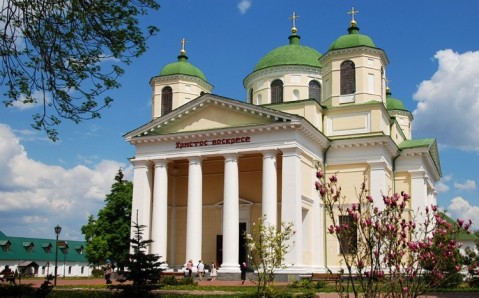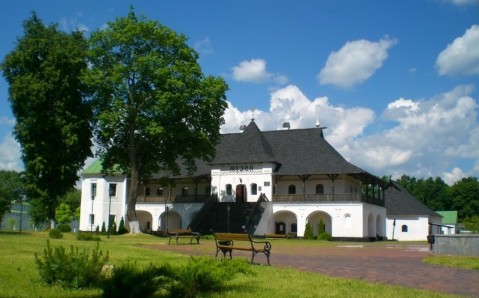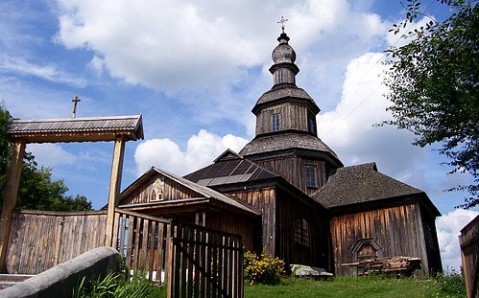The Our Savior and Transfiguration Monastery
Pushkina St. 1
Price: monastery tour - 60 UAH for a group of up to 10 people
Working hours: from 9 a.m. to 7.45 p.m.
Spread on the high Desna River’s bank, the majestic complex of the Our Savior and Transfiguration Monastery is rightly considered to be old Novhorod-Siversky’s key sight. Founded almost thousand years ago, it is numbers to the oldest and the most beautiful Ukraine’s monasteries.
The exact date of the Our Savior and Transfiguration Monastery’s foundation is lost in history. However, according to legend, it was laid by Old Russian Prince Mstislav in the 11th century. Being surrounded with powerful stone wall, the monastery looked like an impregnable fortress and fulfilled an important defensive function. And it was here that Novhorod-Siversky’s princes received the ministrations for various deeds.
Initially all monastic complex’s buildings were wooden. First stone constructions appeared here in the 12th century – these were the Petropavlovskaya Church and the Cathedral of Our Saviour (Our Savior and Transfiguration Cathedral), which was considered to be the cloister’s main temple. At the same time, monastery’s household buildings’ system started to form.
In 1239, however, the majority of buildings in the Our Savior and Transfiguration Monastery were ruined and ransacked during Mongols' and Tatars' invasions. Afterwards the Cloister was desolated and remained in this state until the 17th century, when it was rebuilt again. That was true renaissance period for the cloister.
Thick walls with corner towers and over gate belfry appeared around the monastery once again. As legend has it, after the Second World War, somebody wanted to dismantle the towers to bricks for building of houses. Yet the walls were so strong that even an explosive could not destroy them! A bridge leading to the Holy Gates with a bell tower was also rebuilt. In addition to this, the Petropavlovskaya Church, chamber and seminary building were constructed.
In the late 18th century, the Russian empress Catherine the Great contributed to the Our Savior and Transfiguration Monastery’s prosperity with all force. She was imbued with extremely warm feelings to the cloister, after visiting Novhorod-Siversky in transit. She ordered to rebuild the Church of Elijah the Prophet and the Cathedral of Our Saviour – the architectural masterpiece created by talented Italian architect Giacomo Quarenghi, who designed many buildings in St. Petersburg – on the monastic complex’s territory. This magnificent temple in Classicism style is considered to be the Our Savior and Transfiguration Monastery’s main adornment even today.
This temple, besides its unusual beauty, is also famous for being the place from where Igor Svyatoslavich led his unsuccessful campaign against Cumans in 1185. This event later became the main subject of the most celebrated Rus’ epics - "The Tale of Igor's Campaign.” Today, on the base of a cloister, a namesake museum stands. Its impressive exposition occupies the former owner’s superior's house.
In the early 20th century, the Our Savior and Transfiguration Monastery was closed upon Soviet authorities’ order and in the following years, it started to collapse. The local residents, however, took the alarm in time and won the status of historical and architectural reserve for their main sight. The Second World War became a tough period for the cloister – a concentration camp, where thousands of people were killed, was located on its premises.
In the post-war time, the monastery was gradually rebuilt and, at the same time, numerous archeological excavations were carried out. They resulted in finding on the territory of the Our Savior and Transfiguration Cloister prince’s tower’s foundation, in whose ruins a woman's and a child's remains lie. Ancient findings were preserved under glass, and observation ground for visitors was equipped nearby.
The Our Savior and Transfiguration Monastery is active even today. The towers, monastic galleries, and dungeons are open to the public, as are the temples.

 Central
Central
